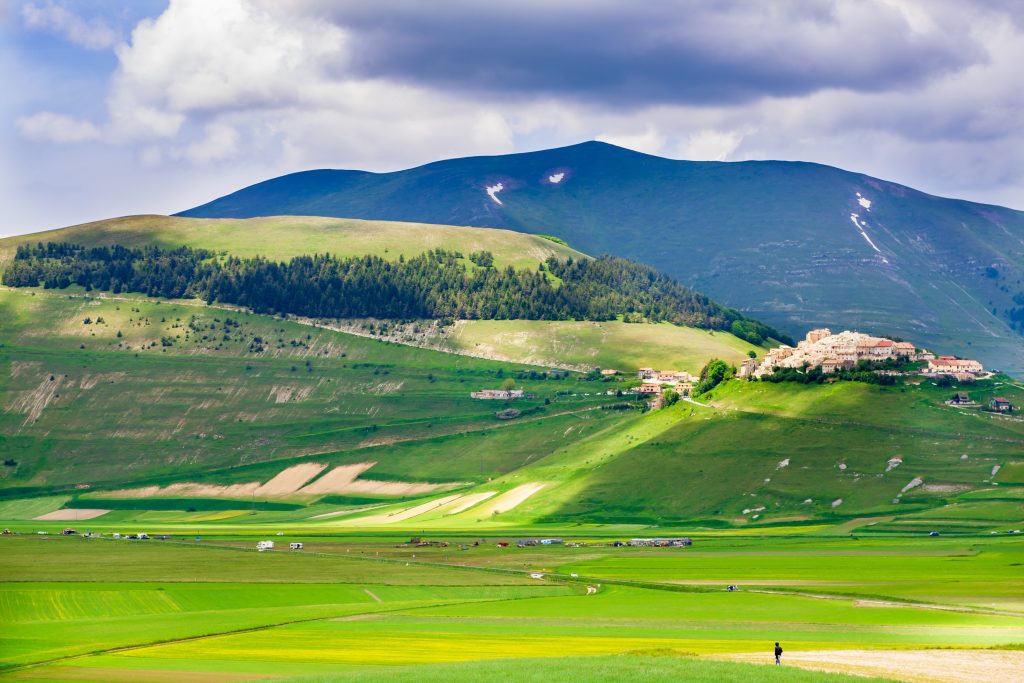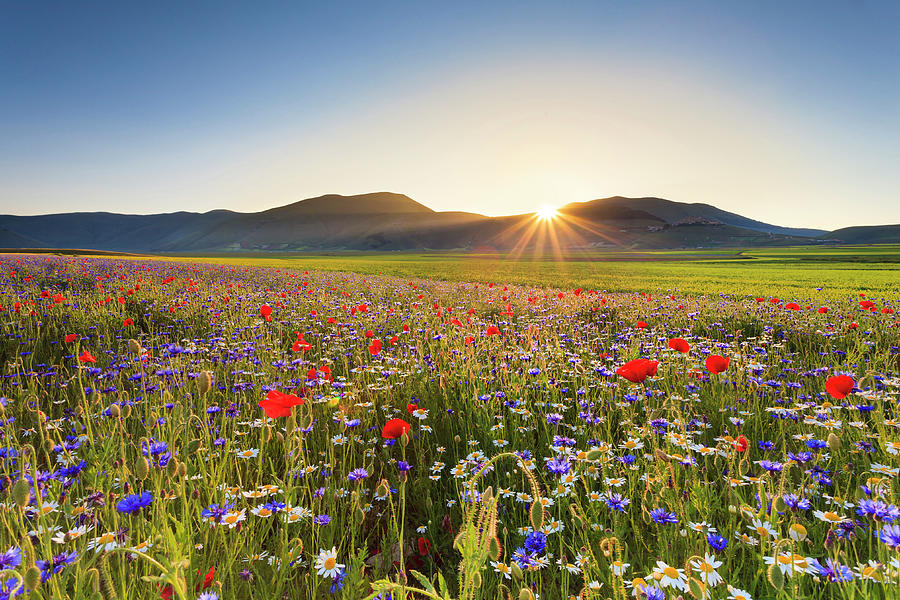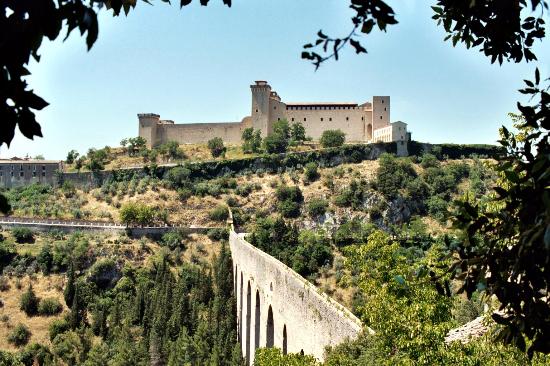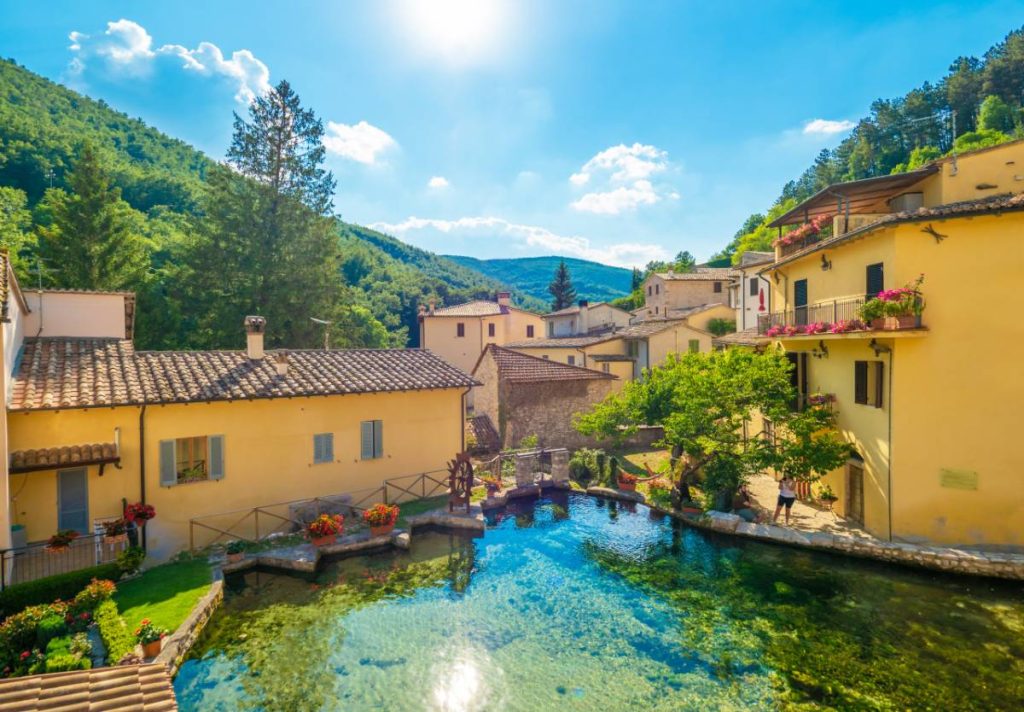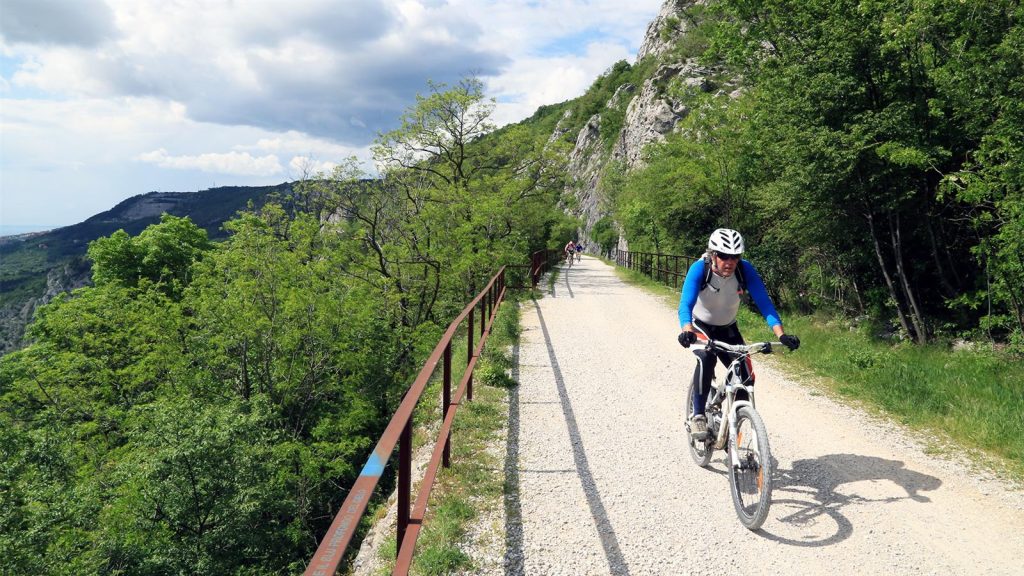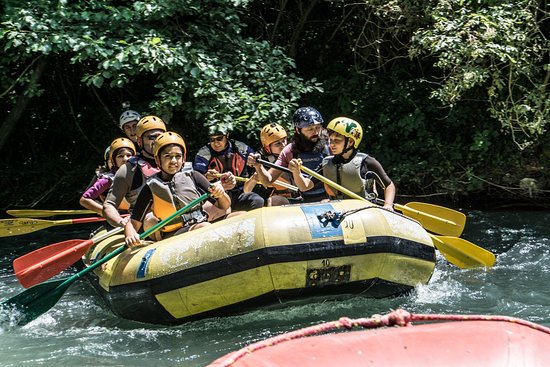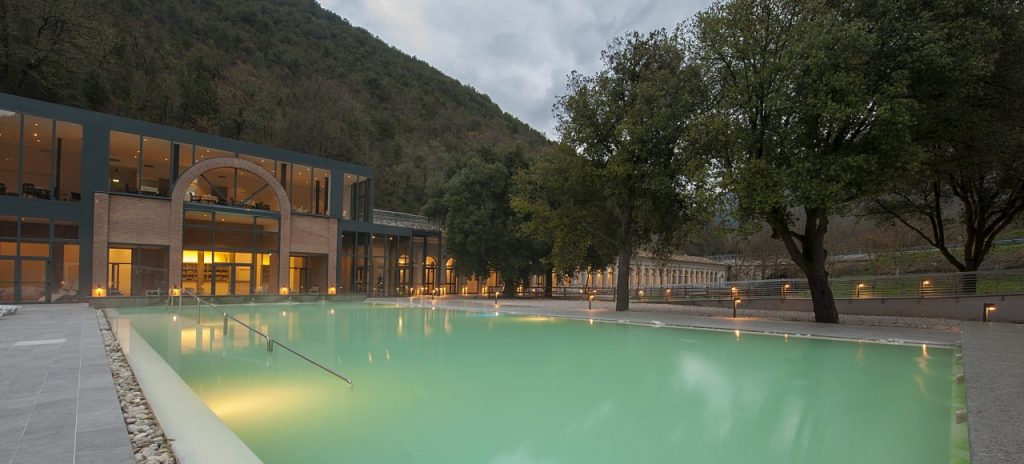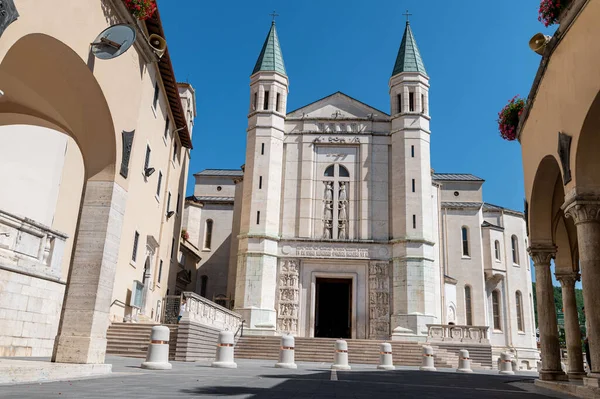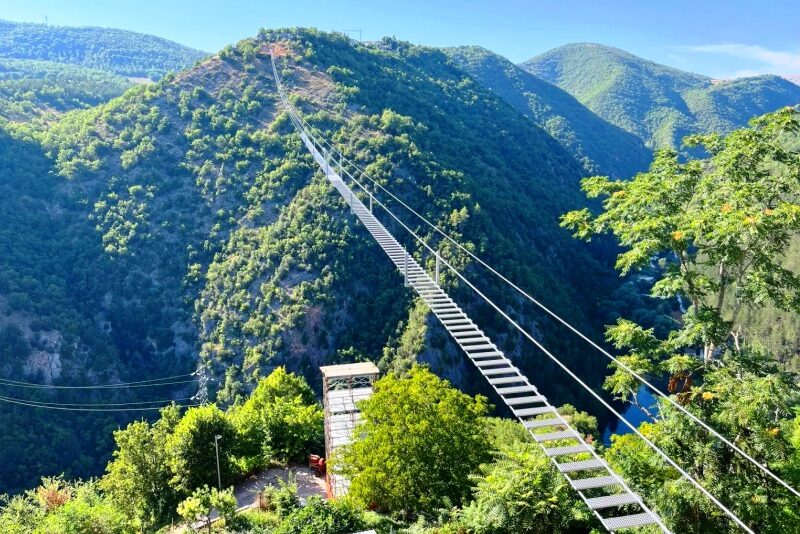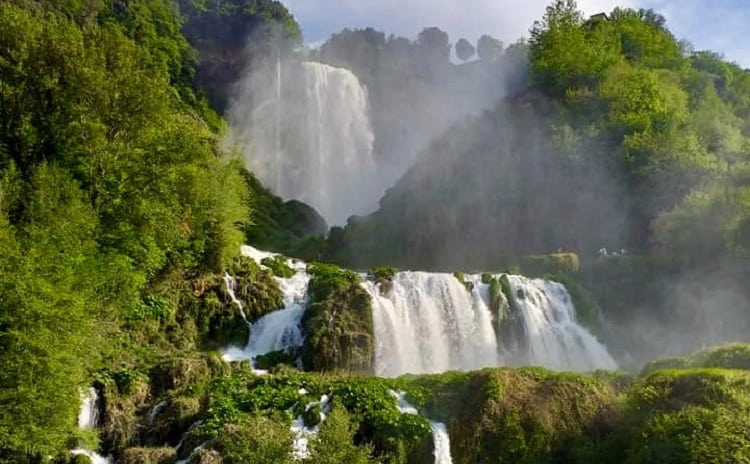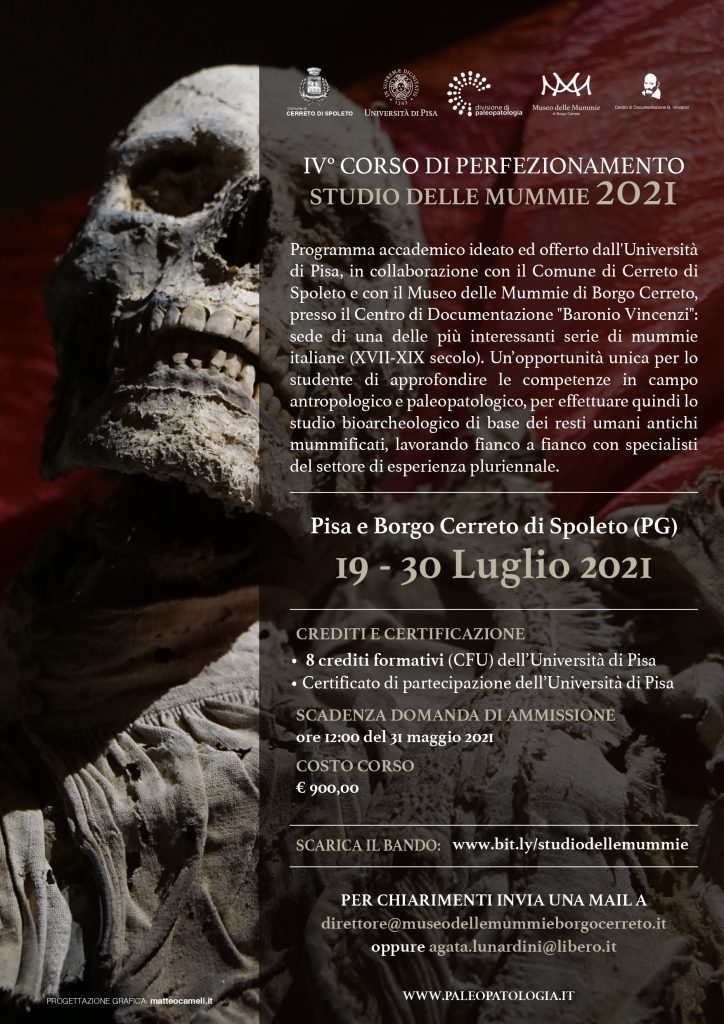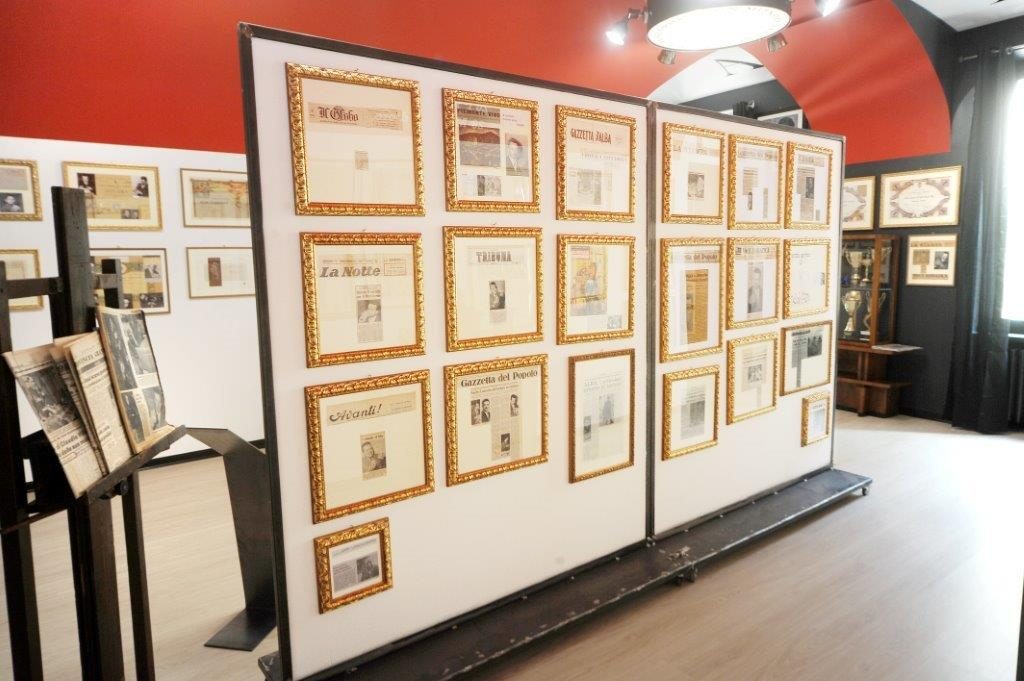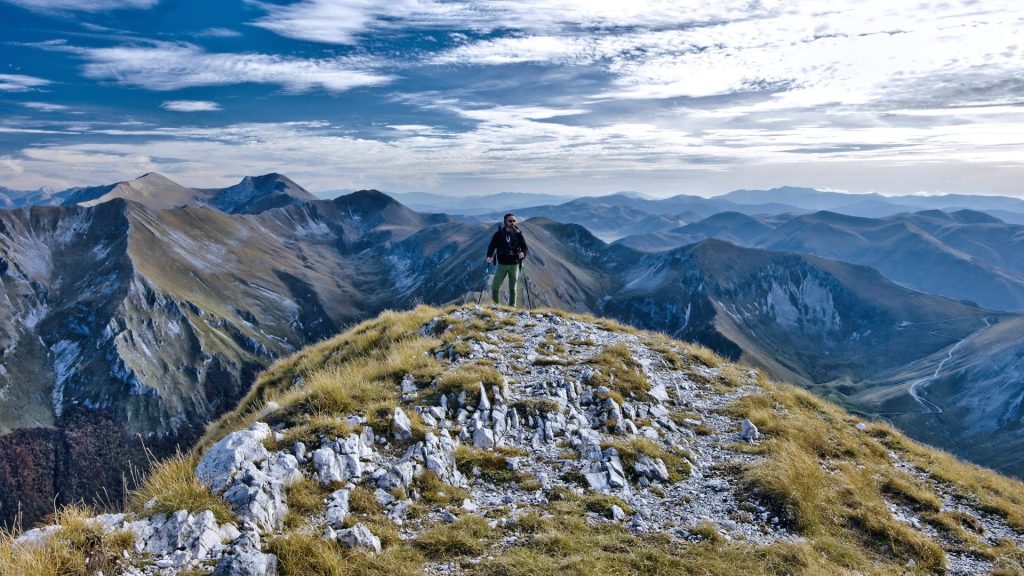The places to visit
We are located in an area full of places to visit and activities for people of all ages. These are the places we most sugest, with a small description and how many kilometers away from us. Find the most suitable for you:
Norcia
Formerly called Nursia, Norcia is located in the heart of the Valnerina, in the western wall of the plain of Santa Scolastica, just over 600 meters above sea level, in the center of an area rich in archaeological evidence that confirms the presence of man since the Middle Paleolithic.
- Municipality of Norcia
In addition to visiting the historic city, it is possible to take long walks surrounded by nature or try typical culinary products.
- 23km
- Nature trails
- Medieval Village
- Culinary specialties
Castelluccio di Norcia
At 1,452 meters above sea level, Castelluccio di Norcia is one of the highest settlements in the Apennines, reached by an incredible scenic road.
Situated on a hill within the Sibillini Mountains National Park in Umbria, this small village of just over 100 inhabitants sits above the "Piano Grande" (1270 m), one of three karst plateaus surrounding Castelluccio, the other two being Pian Piccolo and Pian Perduto; once the bottom of an ancient Apennine lake, they hold underground water reserves.
Every year, from late May through July, the plain is transformed into a carpet of colorful flowers, a spectacular spectacle of nature called "La Fiorita," when lentils (for which Castelluccio is famous) bloom, along with poppies, cornflowers, daisies, wild mustard, orchids and other flowers.
- 25km
- Nature trails
- Medieval Village
- Culinary specialties
Spoleto
Spoleto is an ancient city located in the province of Perugia, at the foot of the Apennines. Considered one of the most important tourist and artistic centers in the region, Spoleto is world famous for the Festival of the Two Worlds, which began in 1958 and during which theatrical, opera and ballet performances of the highest level are held.
Of great interest: the Cathedral, the Arch of Drusus and St. Gregory Major.
Rasiglia
Rasiglia is also known as the "Village of Streams" or "Venice of Umbria," because of the streams that run through the small village center: thanks to them, a flourishing textile industry developed since the Middle Ages, which of the water used its energy to move looms.
Old Railroad Cycleway
In 1926 the railway line connecting the city of Spoleto with Norcia was inaugurated. At the time it represented a small jewel of railway engineering: along a route of just over 50 kilometers, 19 tunnels, 24 bridges and viaducts of great architectural merit were built, with helical line sections and gradients of up to 4.5 percent .
The railroad was closed in 1968 and, after many years of inactivity, in July 2014 and a bicycle and pedestrian path was opened on the route of the old railroad, which can be walked as far as Piedipaterno.
The route is characterized by narrow gorges, high mountain landscapes with slight inclines, until it reaches its maximum altitude at the point where the Caprareccia tunnel is located.
Canoe rafting
River activities are accessible to everyone, require no special technical or physical training, and are also suitable for children (ages 4 and up). You will be provided with full equipment and only need to bring a swimsuit.
Triponzo Baths
The Bagni di Triponzo, in the Aeneid, is where the crystal-clear water of the Nera River mixes with the sulfurous, white thermal waters. Built in Umbria in 1887 on an ancient Roman structure, it is located in the heart of the Valnerina valley, surrounded and protected by centuries-old forests and trees. In this magical place, full of charm and history, nature offers health and wellness, ingredients for unique experiences, experiencing the energy of water and the effectiveness of bionatural treatments.
Cascia
The Basilica of St. Rita of Cascia is an important religious destination in umbria, and also in the city are especially worth seeing the excellent medieval architecture: the Gothic church of St. Francis, which is striking for the beauty of its rose window and ogival door; the church of St. Anthony Abbot, originally from the 1400s but restored and modified in the Baroque period, which has a cycle of paintings on the history of the saint inside. The collegiate church of Santa Maria, one of the oldest buildings in the town, dates back to the Lombard period, although it has been considerably altered by the damage caused by earthquakes that characterize the geological history of these lands. Inside are striking works such as the lignified Crucifix from the 1400s.
Also from the Gothic period is the church of St. Augustine, inside which are magnificent examples of frescoes from the Umbrian and Perugia schools.
- 28 km
- Nature trails
- Medieval Village
- Religious destination
Ponte Tibetano di Sellano
Il Ponte Tibetano di Sellano è un’attrazione unica per chi visita l’Umbria. Questo ponte, che unisce Sellano alla frazione di Montesanto, si sviluppa nel vuoto per 517 metri a 175 metri di altezza sopra la valle del fiume Vigi. Con 1023 passi necessari per attraversarlo, risulta essere, assieme al ponte tibetano di Arouca, in Portogallo, il più alto d’Europa.
Questa magnifica opera di ingegneria è percorribile in massima sicurezza da tutti: escursionisti esperti, giovani intrepidi, ma anche famiglie e gruppi di amici.
Il ponte tibetano si trova esattamente nel centro storico di Sellano, a metà strada tra le città di Foligno e Spoleto. La sua accessibilità permette di programmare una vacanza o un weekend nel meraviglioso e selvaggio appennino umbro e vivere un’esperienza diversa, senza troppe peripezie.
- 12km
- Nature trails
- Borgo medioevale
Cascata delle Marmore
The Marmore Falls is one of the most famous in Italy and among the highest in Europe. It is located in the Valnerina, not far from Terni, included within the Nera River Regional Park. It is formed by the Velino River, which flows into the Nera River descending from Lake Piediluco.
If you are planning a visit to the area, it is a must.
To admire the Cascata jumps, it is possible to enter from two different points: the Lower Belvedere and the Upper Belvedere. The Upper Belvedere, which is located at the end of the eponymous village of Marmore on the road leading to Piediluco, offers a spectacular view of the first jump, while from the Lower Belvedere on the road leading to the Valnerina it is possible to have a total overview of the Waterfall and admire it in all its majesty.
Museum of the mummy of Borgo Cerreto
The "Baronio Vincenzi" documentation center is a scientific and cultural center that was created on an initial collection of anthropological and history of costume artifacts related to the life and activity of physician Baronio Vincenzi. The center is home to the widespread museum of the Municipality of Cerreto di Spoleto in which it collects archaeological, historical, anthropological and environmental evidence in the multiplicity of their aspects. The three levels of the 'building were intended to house three sections of the Center: a multipurpose hall two exhibition rooms for anthropological finds and, in the lowest level, a permanent laboratory for the study of mummies. The exhibition on the mummies of Borgo Cerreto presents some aspects of the life of the medieval Borgo through the mummified bodies of some of its inhabitants, found in the crypts of the Church of SS.
Jesus and Mary. These are the mummies of twenty-three individuals: nine men, six women, one teenager, five children and two infants, eleven of whom are still in their original wooden boxes. This is valuable study material as it is not decontextualized. The state of preservation of the bodies appears quite diverse: eight mummies are well preserved, seven partially and eight skeletonized.
The study of the clothing and personal accoutrements, together with the typology of the coffins, has made it possible to date the burials between the first half of the 1700s and the first half of the 1800s. Studies conducted on the mummies and other artifacts have revealed details of the daily life, diet, diseases, and surgical practices of a small human community that lived and developed among the houses, alleys, mansions, and fields of a corner of the Valnerina.
Truffle Museum
Inside the museum, one can relive the history of the Urbani family and the major events that have occurred over the years.
Antique handwritten bills, telegrams and even personal letters received from the United States are present in the museum.
There are many objects from the past in the halls, such as the first improvised hand washers in the farmhouse of Carlo Urbani and his wife Olga, or the letter of thanks from President Ronald Reagan for those 1.1 KG of truffles sent by brothers Bruno and Paolo.
The museum from the first steps taken by the Urbani family in the past, arrives at the "Confraternity of Truffles," established in the 1980s, and the award of the Knighthood of Labor to Paolo Urbani in 1996.
- 20 km
- Museo
National Park
of the Sibillini Mountains
Il parco comprende un territorio di oltre 70.000 ettari forgiato dalle forze della natura e dipinto a tratti da millenni di storia e cultura locale dove, ancora oggi, si percepisce la magica presenza della mitica Sibilla, aleggiano i ricordi di antichi riti e si tramandano suggestive leggende.
The Sibillini constitute a mountain range of purely calcareous origin that has been profoundly shaped by the action of the Quaternary glaciers, traces of which are recognizable in the splendid glacial cirques of Monte Vettore, Monte Bove, the upper Ambro Valley, the Val di Tela (Monte Rotondo) and in the "U"-shaped valleys below. Particularly evident are also the karst phenomena in the plains of Castelluccio and in the numerous dolines located in the upper Panico Valley, in the Ambro Valley, at Palazzo Borghese as well as in the grooves and cavities in the rock walls of the main valleys where massive limestone outcrops, such as the Tenna, Ambro and Fiastrone Valleys.
